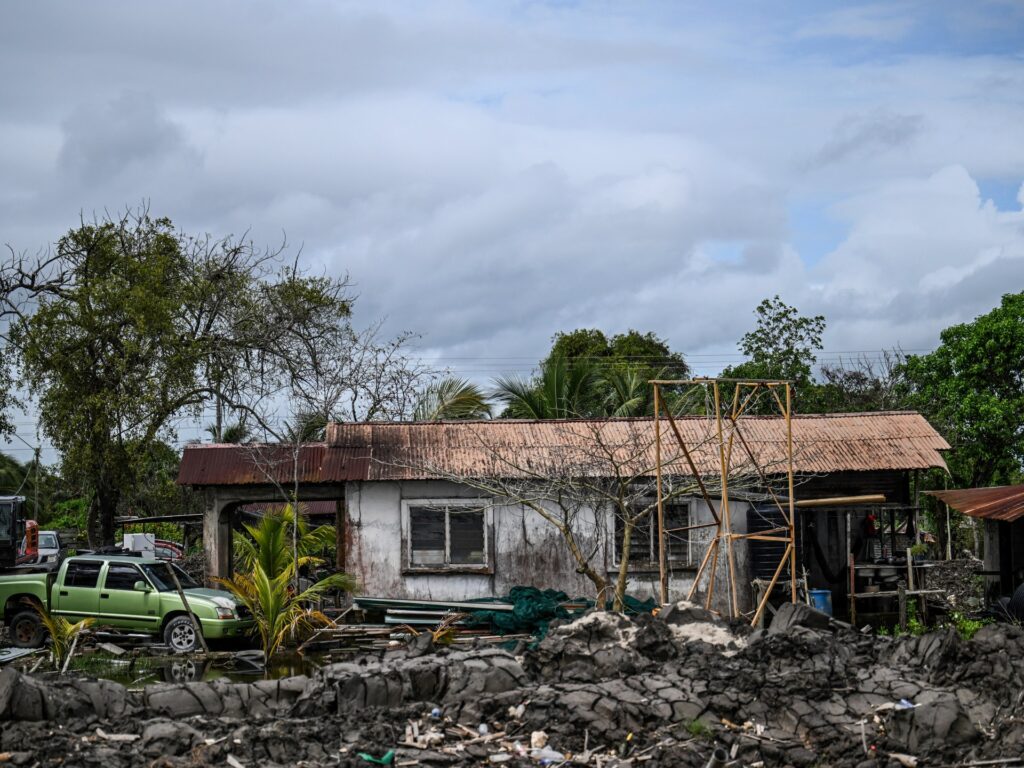Suriname, South America’s smallest nation, is among the most susceptible on the earth to rising sea ranges.
Practically seven out of 10 folks within the former Dutch colony of 600,000 inhabitants reside in low-lying coastal areas, in keeping with the United Nations Intergovernmental Panel on Local weather Change.
“Each day I see a bit of my land disappear,” mentioned Gandat Sheinderpesad, a 56-year-old farmer who has misplaced 95 % of his smallholding to the ocean.
Native authorities have for years been looking for a strategy to maintain again the tide.
“Some areas should not problematic as a result of now we have 5, 10, even 20 kilometres (three, six or 12 miles) of mangrove” performing as a buffer between the waves and the shore, mentioned Riad Nurmohamed, Minister of Public Works.
However close to Paramaribo, the capital metropolis of Suriname, “there is only one kilometre so it’s a really susceptible zone”, he added.
In 2020, a programme to revive the capital’s mangroves was launched.
UN Secretary-Common Antonio Guterres sought so as to add VIP energy to the initiative in 2022 by wading into the mud to personally plant seedlings.
However 5 years later, Sienwnath Naqal, the local weather change and water administration skilled who led the mission, surveys a scene of desolation.
The ocean is now lapping on the fringe of a highway and the wood stakes to which he had hooked up a whole bunch of saplings are largely naked.
Excessive seas carried away the substrate sediment, leaving the roots uncovered.
“Over the past two to a few years, the water forcefully penetrated the mangroves, which have been destroyed,” Nurmohamed mentioned.
The dredging of sand on the entrance to the Paramaribo estuary to facilitate the passage of boats headed upriver to the port additionally contributed to the erosion, mentioned Naqal.
However just like the Amazon rainforest in neighbouring Brazil, the destruction was additionally deliberate in locations, with farmers uprooting mangroves to make means for crops.
With the water lapping on the toes of Paramaribo’s 240,000 folks, Suriname has modified tack and set about constructing a dyke.
For Sheinderpesad, the levee represents his final likelihood of remaining on his land.
“I’ve nowhere else to go. When now we have the dyke, I will likely be safer, though I’m unsure for the way lengthy,” he mentioned.
The 4.5km-long barrier will value $11m, which the federal government has promised to fund from state coffers.
“In the event you go see donors it takes years earlier than you can begin to construct. We have now no time to waste, we’ll be flooded,” Nurmohamed defined.
However plugging one gap within the nation’s maritime defences won’t suffice to maintain the mighty Atlantic at bay.
The federal government needs to construct up your entire community of dykes that dot the nation’s 380km shoreline.
It’s simply unsure the place to seek out the cash.
“It’s a colossal funding,” Nurmohamed mentioned.
The nation’s newly found offshore oil deposits might present the reply.
Final yr, French group TotalEnergies introduced a $10.5bn mission to use an oil discipline off Suriname’s coast with an estimated capability of manufacturing 220,000 barrels per day.

